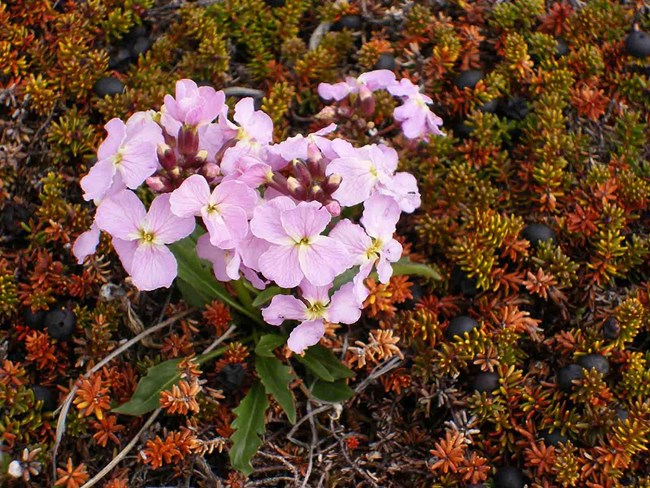
Vegetation is the basis for ecosystem productivity and wildlife habitat. Arctic vegetation is very sensitive to climate change and disturbance such as fire, herbivory, and human impacts. Research has documented an increase in shrubs and, to a lesser extent, trees in the Arctic over recent decades. Major changes in vegetation structure such as these have a cascading effect on other ecosystem attributes, such as wildlife distribution, fire regime, and water chemistry. In addition to vascular plants such as shrubs and herbs, the Arctic has abundant lichens that provide wildlife forage and are a component of biodiversity. Lichens are quite sensitive to caribou and reindeer grazing, competition from other plants, fires, and contaminants. All of these factors could lead to future decreased lichen diversity and biomass. Tracking changes in vegetation helps us understand changes in wildlife habitats and fire ecology.
We monitor vegetation in order to document:
- Long-term changes in plant structure (the height and density of plants) using ground plots in ways that can be tied to remotely sensed imagery, such as aerial photographs and satellite images, for extrapolation over large areas.
- Long-term changes in lichen abundance and diversity.
We monitor terrestrial vegetation and soils in all the Arctic Network parks.
Contact: David Swanson
-
Black Spruce in Alaska's National Parks
Black spruce are small trees found in interior Alaska. They are found in areas where permafrost is present, and grow slowly, so trees that appear small may be over 100 years old.
- Duration:
- 58.917 seconds
-
Birch-Aspen-Poplar
All the broadleaf forests in Interior Alaska are composed of just three tree species: birch, aspen, and poplar. They look similar, this video will tell you how to tell them apart and will help you learn more about them.
- Duration:
- 1 minute, 35 seconds
-
Tussock Tundra in Alaska National Parks
Tussocks are important features of Arctic ecosystems. Learn how tussocks form and more about their role in the ecosystem.
- Duration:
- 54.334 seconds
Learn more
Last updated: July 6, 2023

